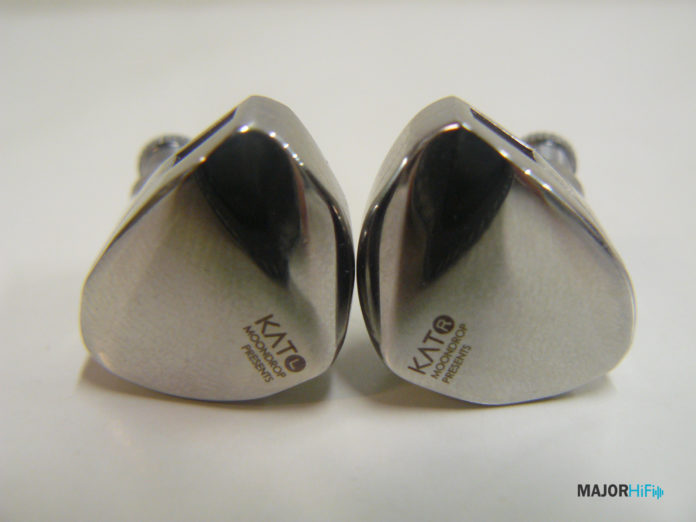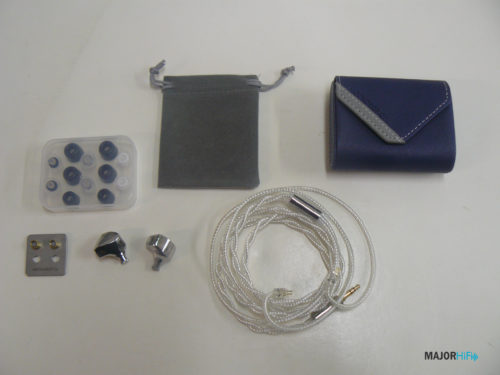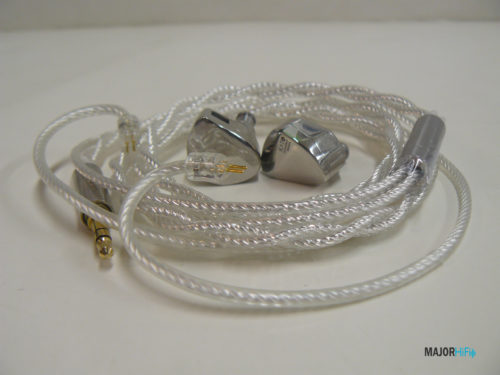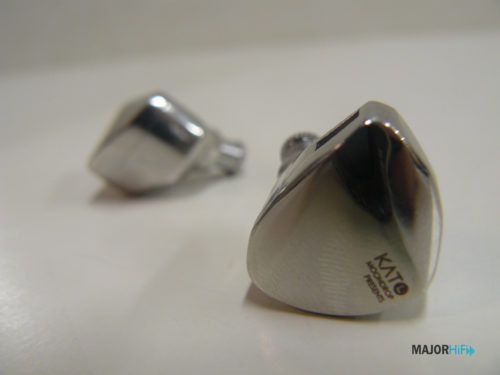Recently I took a look at two of IEMs most inexpensive IEMs, the Aria and the Starfield. They shared many similarities but were different enough to excuse the slight change in price. However, they’re still available in the same price range, along with another IEM, the Kato. The Kato is $189.99 and is advertised as one of the best you can get from them for less than $200. Let’s jump right into the Kato and whether or not it should make your list of IEMs to check out.
What You Get
The Kato has a great presentation of its contents. The earphones themselves are neatly organized and protected well. Above them sits a nice blue carrying case containing the Kato’s cable. This cable is a pretty fantastic silver-plated cable made from high-purity copper. It’s unexpected to see a cable with this kind of appearance for this price. You’ll also see a case of ear tips, giving you 3 pairs of silicone and three pairs of foam. In a clear ziplock bag, there’s a drawstring bag that contains two interchangeable nozzles made of steel and brass which change different sonic properties.
Look and Feel
Moondrop has designed yet another striking IEM, this time with a great stainless steel housing. Its silver surface is smooth and glossy, with a hive-live pattern on its inner casing. You can always expect a sleek design from Moondrop, and the Kato is one of their best yet. It also works in terms of fit, with an ergonomic shape for its ear cavity. The Kato feels natural when placed within the concha, which is all you can ask for with any type of IEM build.
Design
The Kato uses a 10mm dynamic driver with a DLC composite diaphragm. It uses super-linear technology that includes an improved magnetic circuit combining internal and external magnets for superior dynamics and minimal distortion. The DLC diaphragm features high rigidity and dampening that is said to rival the performance of beryllium. An acoustic cavity helps shape a balanced tuning and improves phase performance.
Soundstage
When I compared the Aria and the Starfield, I noted how the impressive stage Moondrop sets in their more economical IEMs set a precedent for other IEMs of its ilk. With the Kato, it seems like this level of stereo imaging is just the norm for Moondrop. When testing out the Kato for the first time, it was, of course, the first element of the sound signature that stuck out to me. Moondrop still manages to surprise me when it comes to their selection of IEMs in this price range. The Kato performs a great amount of depth here separating its layers with a significant amount of airiness. This causes the Kato to display a grander sense of spatial imaging while still administering accurate positioning for articulate stereo reproduction.
Compared to the Aria and the Starfield, the Kato is the most spacious of the three, exaggerating the sound field in interesting ways. The height here is far greater here, and layers of frequency stack and wrap around each other adding a considerable amount of outward headspace. Certain performances like drum solos have a tendency to feel like they’re dancing around your neckline and surround the mix with the more parts of the drum set the track adds. You get a wide left/right stereo field, but the soundstage doesn’t stop there. The Kato performs a greater extension, spacing out the layers with more holographic dimension. Its ability outdoes a ton of IEMs going for the same price.
Low End
You can expect a tight and defined bass here, with detailed elements that dynamically flesh out tone without becoming the center of the mix. While there are good instances of impact, I didn’t get the feeling that the bass was quick enough to respond in a way that defined the sound signature. Instead, the bass emanates naturally and with added depth from its spatial placement. The timbre is still buttery smooth though, giving you a sense of fullness that completes the sound signature well. You don’t get the sense that any part of its resonance is missing, but it offers a more realistic portrayal of low-end frequencies than one that’s energetic.
Mids
The midrange operates at a pristine level of clarity and offers plenty of transparency and tonal richness. Much like the lows, I felt the Kato operates with a more accurate and realistic reproduction of frequency. With the added spaciousness of the soundstage, the mids are able to showcase their details with a much more articulate resonance, complimented by clean textures with minimal recession in the frequency response. Instrumentals and effects are front-facing making them easy to interpret, with a full tonality that makes musicality much more engaging. Orchestral strings were a big standout, as well as whaling electric guitars that cut through the mix with perfect emphasis. Of course, vocals are its biggest standout, with the upper-mids producing some ethereal textures for female performances.
Highs
With the treble, you get the sense that the Kato is just holding back its brightness in order to create its detailed response. And airy resonance fills the highs with crispness and height, adding to the spacious effect of the Kato for a very fulfilling timbre. It is soft and smooth without appearing like much is lost in the way of resolution or fidelity. I found some elements to pierce just a little bit before reserving itself, showcasing a significant level of control that’s hard to come by in a lot of IEMs.
Summary
For me, the Kato is another winner from Moondrop. The level of sonic fidelity delivered here is a steal for $189. Everything from an extended soundstage to its rich midrange is more than worth the experience alone, but when you add the dynamics of the highs and lows, this IEM is operating at a level that makes it almost untouchable. Between the three economical Moondrop IEMs I’ve looked at so far, the Kato is the one I’d personally invest in.
| Pros | Cons |
|
|
The Moondrop Kato is available at Audio46.
MAJORHIFI may receive commissions from retail offers.












